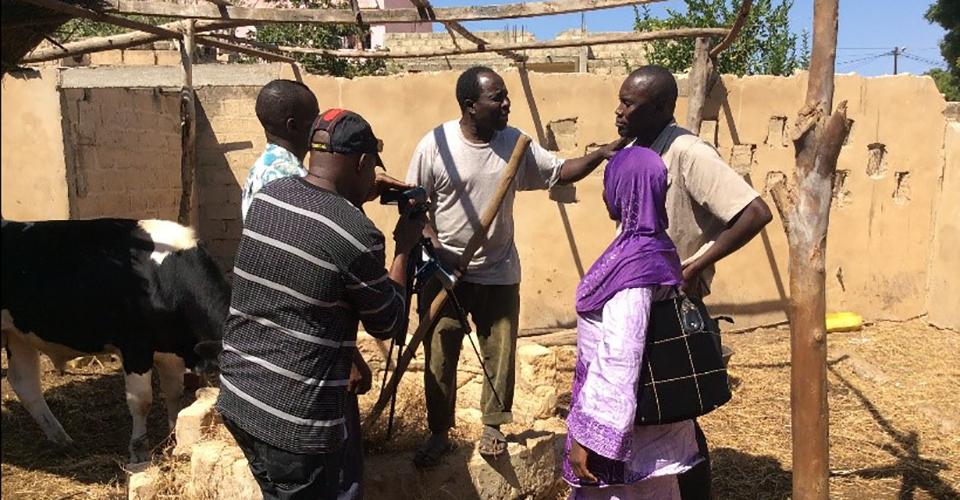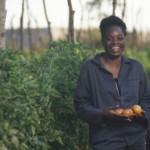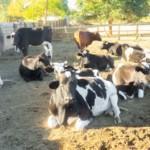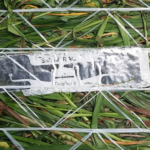
Eija Laitinen & Peter Kuria
In today’s digital era, enriched media and especially videos can play a critical role in the delivery of rural advisory services. Videos can make agricultural extension more effective and efficient. Messaging through voice and moving images supports learning, and videos can reach those who otherwise have difficulties accessing relevant information.
The need for accurate, relevant and up-to date information is critical for communities living in marginal environments and fragile ecosystems in rural Africa. Videos can complement the existing communication tools for practitioners working to enhance resilience and coping strategies among the rural communities and especially women, whose access to agricultural extension services is limited. This is possible because despite the still existing challenges of the affordability of smart phones and access to the Internet with multimedia capabilities, the availability of ICT technology is constantly becoming more commonplace also in rural Africa.
Africa has the fastest growth rate and potential for phone and mobile data penetration. In 2025 nearly 700 million mobile smartphone connections are expected to provide mobile internet access (GSMA, 2020). Mobile telephone and communications companies have served well in building the ICT infrastructure enhancing the possibilities for data penetration. This makes the use of mobile data and simple social media applications viable tools for delivering relevant material and information. Africa’s digital transformation strategies emphasize the importance of a conducive and enabling environment to support ICT investments. The African Union continental development strategy, Agenda 2063 (African Union, 2015), perceives ICT as a critical tool for development. The digital transformation strategy (2020–2030) of the African Union (2020) harnesses digital technologies for continental prosperity and inclusivity.
The dissemination of critical instructional information through voice, video, and images even directly to farmers is becoming possible even in very remote areas. Videos can offer a step by step guidance on the applicability of research results and their context. They can facilitate the access of farmers to information they really need and serve as an inspiration tool for their own production/coping strategy and innovation processes. Videos can be used as a stand-alone method or supported by other tools. They can bridge discussions, act as learning materials for educational institutions, and they can support the work of agricultural extensionists. Videos are versatile and can easily be modified to suit local languages supported by subtitles and voice over.
Videos for communicating to farmers — the FoodAfrica project
The FoodAfrica project (2012–2018) funded by Finnish Ministry for Foreign Affairs was established to seek solutions to West and East African food security. The project tackled issues such as aflatoxins in fodder, increasing the use of local food in a nutrient rich diet for children and improving market access for small-scale farmers. One of the project’s work packages focused on finding innovative agricultural extension and knowledge transfer methods for the quick up-take of the project findings. HAMK’s work in this work package was to produce videos based on the project findings for the use of extension services and to be used directly by the farmers.
This article describes the rationale behind HAMK’s perspective on technology-mediated knowledge transfer for livestock farmers in arid and semi-arid lands (ASALs). During the project work, the HAMK team first familiarized themselves with the FoodAfrica research findings and then prepared the approach for the video production. The issues considered included understanding the value proposition for farmers in regard to the research findings, and careful selection of informants for the best possible impact. The gender perspective was incorporated in all activities of the process.
This article utilizes data gathered during the discussions of HAMK team with the local FoodAfrica teams, regional and local organizations using the project’s research findings, and with the farmers in the local communities. The authors of the article are the team working with the videos and their personal viewpoints are also utilized.
Videos change the information landscape of farmers
ICT can leapfrog the traditional systems of communication with profound impacts in the way societies develop. A striking example of the power of ICT-based solutions are mobile money transfers (MMTs) (Abdulhamid, 2020). According to the Financial Inclusion Insights (FII) Program (2020) in 2017 already 72 % of Kenyans had a mobile account. The introduction of MMT has completely transformed the banking sector and made savings possible for low earners and those previously unbanked. The service quickly expanded to several other countries in Africa leading to the development of versatile mobile money models and services (UNCTAD, 2012). This easy, effective, and safe payment solution has made a substantial contribution to financial inclusion and growth of developing economies in Africa (GSMA 2019; Aron, 2018).
In agriculture ICT redefines the way in which information and knowledge is generated, captured, stored, processed, and disseminated. Among others ICT has paved the way to the access of downscaled weather forecasts, improved agricultural practices, increased access to reliable water sources and the promotion of a revolving microcredit system for women’s self-help groups. The use of ICT has accelerated the expansion of social media, discussion groups, and networks which all can be part of agricultural extension ecosystem. The uptake and use of ICT is thus transforming the landscape of information and knowledge transfer, including those in deep remote areas.
In 2009 the Technical Centre for Agricultural and Rural Cooperation (Lie & Mandler) published a guidebook “Video in development. Filming for rural change” to encourage development professionals to explore the potential of video in development. The use of videos for agricultural social change has increased rapidly; for example, already by 2015 Access Agriculture, a non-profit agriculture training organization, had produced over 800 videos in 14 thematic areas for farmer training (Salm, Bentley & Okry, 2018).
The use of videos to support agricultural extension has attracted a lot of interest for many reasons. One of these reasons is linked to human learning: learning is better through seeing. The use of pictures improves the memory process and remembering new knowledge (Mayer & Gallini, 1990). The moving images in videos make communication more insightful, they facilitate thinking, and moving pictures enhance understanding of complex processes or procedures. Videos inspire, engage, and lead to improved problem solving. Discovery leads to ownership and individual knowledge construction (Biggs & Tang, 2011), which are the foundations of deep learning. Videos can merge theoretical knowledge with technical and local practices. Videos explain and show potential solutions for farmers, or they can be used to help farmers to develop localized solutions.
The majority of farmers in the developing context have challenges accessing relevant information to improve their agricultural decision making. At the same time the agricultural extension content needs to be broadened from traditional technology and farm management topics to include complicated and interlinked environmental and social sustainability issues. The conventional agricultural extension system is facing difficulties in meeting these changed needs and there is a need for new alternative delivery methods and tools. (Norton & Alwang, 2020.) Farmers’ adoption of complex information requires time and the possibility to explore and experiment (Pannell & Claassen, 2020). The ubiquitous nature of ICT infrastructure makes it possible to reach more people than face-to-face training can. Further, ICT-based agricultural extension can be more effective than traditional training. The variety and richness of media-based tools could make agricultural extension based on ICT locally appropriate and regionally relevant. The visual nature, versatility, and ease of customization could make media-based agricultural extension a powerful platform. Partnerships can be used to improve farmers knowledge of the videos and their access to them (Okry, Van Mele & Houinsou, 2013).
However, the use of videos for the purposes of agricultural extension also has its challenges and limitations. The farmers’ struggle to access relevant information very often remains with videos: the majority of the potential users of such applications are hardly aware of the information available and farmers are not given space to be part of the solution creation process. Furthermore, the farmers’ needs may not be recognized. The price, technical understanding or trusting in the source of information can challenge the use of ICT. On the other hand, with the expansion of the farmers’ access to ICT, videos can be used directly by farmers themselves, and the more they are used, the more they can become tools for agricultural extensionists and educators to reinforce the messages they want to deliver.
Videos — the power tools of the Digital Age
Research has demonstrated the efficiency of audio-visual materials. When properly developed, videos can be highly effective in empowering the marginalized. They can be used to simplify complex knowledge and present it in an easily understandable manner even without being tied to a certain context. A study by Zoussou, Van Mele, Vodouhe & Wanvoeke (2009a) comparing learning through different methods showed the power of videos: showing videos in combination with workshops led to a 92 % uptake, while showing video alone resulted in an uptake of 72 %. These uptake numbers are high compared to the traditional agricultural extension methods: when farmers were informed about new technology in workshops without videos, the uptake was 19 % and the information from farmers’ peers led to a 15 % uptake (compare Zoussou, Van Mele, Vodouhe & Wanvoeke, 2009b).
Research by Bentley & Van Mele (2011) and Van Mele et al. (2010) showed how farmers are able to use videos as an inspirational tool for localized solutions. African farmers viewing videos produced by Asian farmers did not become distracted by the appearance of the people and the farmers in the videos, but they were able to focus entirely on the message of the videos and to develop their own solutions based on the ideas presented in the videos. In this research, the hesitancy to the use videos prepared in another cultural context caused debate among the scientists, civil servants, and R&D actors who thought that the videos produced in Asia would be culturally inappropriate and irrelevant in Africa, hence creating institutional barriers. The open-mindedness, will and capacity of farmers to absorb knowledge relevant to them, is in line with Bentley, Van Mele & Acheampong (2010) who found that at times, the agricultural extensionists’ perception of their own role might be the most liming factor to making agricultural extension effective.
The quality of information, timeliness, and possibility to access information are the positive sides of ICT in information sharing, but digi-based advisory services can face the challenge of veracity and trustworthiness (Mbagwu, Onuoha & Oyemike, 2018). For example, ICT illiteracy can challenge the use of mobile phones in agricultural extension programs (Hellström, 2010). It is also important for the receiver to understand who is sending the information and the receiver needs to trust the sender (Crandall, 2012; Manfre & Nordehn, 2013). At the same time, the mere access to information does not necessarily lead to change or transformation. The most powerful tool to make humans act differently is motivation. Every human must have a reason to change their behavior, people must understand why the new information, knowledge or skill would make sense for them. Therefore, all new information must be put in context and focus on the value proposition for the intended user. Furthermore, it is important to understand that the value proposition of different users might be different, and these possible differences need to be considered when communicating the reasons to change.
HAMK video production perspectives
HAMK’s perspective on video production for agricultural extension is based on the deep understanding of the target group’s training needs. The research findings only become valuable to the farmers when they are able to contextualize the new information. Therefore, discussions with researchers is not enough on its own, but a full understanding of the environment in which the results are to be applied is needed as the starting point for video production.
Defining the needs and use of video: Value propositions of the research findings
In the videos it is important to be able to meet the needs and motivations of the users. This means that the value proposition of the farmers must be well understood. Farmer motivations might include improved income, but alternatively the motivation guiding the decisions may lie deeply in the values and norms of the community. Among pastoralists, the wealth of the farmer is determined by herd size. Pastoralism is a complicated strategy of livestock management based on moving the animals and trusting in the resources available in a harsh environment (FAO, 2009; FAO 2018). Agricultural research findings easily conflict with the values of a traditional way of life. To produce an impactful video, a right angle to approach new technology with respect to the values and traditions of the pastoralists needs to be found.
As stated earlier, the farmers are innovative by nature. This means that the videos might not need to describe the full solution but instead the videos should be a source of inspiration for contextualized solutions, which may inspire the farmer to find a localized solution within the framework of their resources. For this, it is important to explain the reasons and justification for the change instead of merely providing do or don’t do guidance. To be able to provide an answer The video must therefore explain the why instead of how. This is an important question to keep in mind, because agricultural extensionists perceive themselves easily as the ones imparting or disseminating knowledge, solutions, or skills. Once farmers understand the reasons and need for a change, they can shape their own localized solutions which fit into the available resources and match the local environmental context.
Bwisa (2015) defines poverty as a state of “overlooking opportunities consistently and persistently”. ICT and especially videos can be a tool to help to discover overlooked opportunities and to improve the uptake of new information. This is important because agricultural extension with conventional tools and methods faces many challenges in offering relevant information and knowledge for informed decision making (for example FAO 2007 p. 3; World Bank, FAO & IFAD, 2009).
One of the FoodAfrica work packages was in Senegal, where the research objective was to find an optimal gene combination of metis (crossbreed cows) to boost milk production. In Senegal there is a huge deficit of milk and there is potential to increase milk production, thus farmers would need to be encouraged to increase milk production. In the pastoralist communities, the value proposition for milk production is gendered. In a pastoralist family women feed the children, and understanding the link between increased milk production and health motivates them to transform production. In the pastoralist communities animals are traded by men, and larger animals signal wealth and give a better selling price.
Still, the understanding of the potential of metis cows to produce more or to get a better selling price, is not enough to help pastoralists to transform their production practices because the crossbreeds need a different production management system than the local breeds. The metis cows produce better, if they are managed in shelters instead of being moved long distances to seek pastures. Milk production is tied to the amount of fodder, and therefore solutions need to be developed to preserve and also to trade fodder. In Senegal the access to good quality feedstock is one of the limiting factors in milk production. There are also problems providing animals with sufficient drinking water for better milk production. In addition to all this, the local farmers are not confident with artificial insemination, and need information and encouragement to start trusting in it. This example illustrates the comprehensiveness of the guidance needed when supporting the transformation process.
Mitigation and adaptation processes: Who can trigger the motivation for change and transformation?
To be able to meet the needs of the end users, the process of preparing the videos needs to be very transparent. This might lengthen the process, but it is worthwhile when trying to guarantee the usefulness and acceptance of the final product. The consultative process as such is an important learning process for all parties. The discussion challenges agricultural extensionists to consider the correct message. The farmers’ interest in the video should be guaranteed by hitting their value proposition and giving them a reason to be interested in the topic.
Part of the process is the careful planning of who features in the videos, and who are the resource persons used. To make these decisions, careful consideration is put on to whom the audience trusts. Is it the researcher, is it the extension agent, is it a government officer, is it someone the community knows, who they respect? The peers are often trusted and powerful change agents. Lev Vygotsky’s (1978) sociocultural and socio-constructivist learning theory is based on the idea that humans, when sharing and working together can produce more than individuals alone. The key in the socially constructed learning process is the situational collaboration and communication process. This dialog can include various actors who have influence on the learner. Therefore, the impactful set of resource persons can be a combination of experts, administrators, friends and neighbors.
In communities, there are defined roles for men and women. In a video, there is many kinds of information, and depending on the information, the right resource people may be different. It might make sense to use respected professors to deliver certain information since it would be better accepted coming from someone with a high status in a society. On the other hand, some information might be better shared by a peer farmer to allow the viewer to relate and have the feeling of being able to succeed if a neighbor already has been able to make it.
Conclusions
This article has discussed the possibilities of using technology-mediated tools, and especially videos, to make agricultural extension programs and ideas more impactful (Van Mele, Wanvoeke & Zoussou 2010). The research strongly shows that traditional face-to-face training supported by videos is more effective than training sessions trusting an agricultural extensionist only to explain things. Technology allows the combination of different elements in training to reach out to the human mind more effectively. The videos can use local languages and even though the research has shown that videos are not country-specific, if so needed in addition to local languages, the correct culturally specific symbols can be used to boost their effectiveness and intensify their trustworthiness and relevance. Therefore, videos seem to be a cost effective and flexible way to support research result dissemination.
A participatory approach in development calls for trust in every person to be the best expert in their own lives to find good solutions. Videos can be motivational tools to support the innovation of farmers and to aid the process of finding their own solutions. By paying healthy respect to the knowledge farmers have and by recognizing the farmers’ will to move forwards, videos are a modern tool to inspire farmers and farming communities towards innovation and development actions. The motivation for change may consist of material rewards or it may be based on social aspects. The opinions of peers are valuable and therefore some people might be motivated to transform themselves because of the respect and recognition they may gain. Humans want to engage themselves to processes they feel to have changes to succeed (Bandura, 1997).
The most fundamental question in the learning process is to understand the reasons for the need of transformation. The understanding of value propositions of the target audience raises the question of the expertise needed in the dissemination teams. Normally in research projects dissemination is done by the same team who carry out the research. This means that the researchers and substance specialists at the end of the project need to become specialists of the human mind. This raises the question as to what kind of expertise an agricultural extension team needs: the mere understanding of agriculture is not enough to guarantee the right approach. Understanding the value propositions, the ways to pack the information in an impactful way with respect to the end users, however, is a discipline as such. Therefore, powerful dissemination would require scientists and specialists who understand the learning process in depth from the point of the learner, who can use the dissemination tools in a flexible and impactful way and who understands the role of the teacher or agricultural extensionist in way which gives enough space for the learners to engage themselves in a meaningful learning process.
In summary, it is important to understand the pathways to acceptance of the message before producing material targeted for certain groups. It is also important to understand the ease of use of the solution, especially the technology interface and how the information is put together and how it assures the trust of the knowledge users. Media-based tools create avenues to complement face-to-face agricultural extension programs for better impact because understanding transformation through learning becomes easier through the stimulation of different senses. Finally, communication should effectively address the value proposition relevant to the end user or, without this, ICT communication tools can equally be redundant.
Authors
Dr Eija Laitinen works as Principal Research Scientist in HAMK Bio Research Unit. She has been part of several development projects in Africa focusing on income generation of rural communities. In the FoodAfrica project she worked as HAMK project coordinator.
Mr Peter Kuria Githinji has done a lifelong career in development in looking for solutions to challenging problem-situations. In the FoodAfrica project he worked in HAMK as a Project Specialist.
References
Abdulhamid, N.A. (2020). Disruptive Technology, Mobile Money, and Financial Mobilization in Africa: M-Pesa as Kenya’s Solution to Global Financial Exclusion? In Arthur, P.K., Hanson, K. & Puplampu, K.P. (Eds.) Disruptive Technologies, Innovation and Development in Africa, pp. 187-202. London: Palgrave Macmillan.
African Union (2015). Agenda 2063: The Africa we want. Addis Ababa: African Union.
African Union (2020). Digital Transformation Strategy for Africa (2020–2030). Addis Ababa: African Union.
Aron, J. (2018). Mobile money and the Economy: A Review of the Evidence. The World Bank Research Observer 2(33), pp. 135–188.
Bandura, A. (1997). Self-efficacy: The exercise of control. New York: W. H. Freeman.
Bentley, J. W., Van Mele, P. & Acheampong, G.K. (2010). Experimental by nature: Rice Farmers in Ghana. Human Organization 69(2), pp. 129-137.
Bentley, J. W. & Van Mele, P. (2011). Sharing Ideas between Cultures with Videos. International Journal of Agricultural Sustainability 9(1), pp. 258-263.
Biggs, J. & Tang, C. (2011). Teaching for Quality Learning at University. Glasgow: Society for research into Higher Education & Open University Press.
Bwisa, H. (2015). Oral information. Welcome remarks. African Agribusiness Incubation Network (AAIN) 1st Annual Conference Oct. 28–30, 2015. Nairobi, Kenya.
Crandall, A. (2012). Kenya farmers’ Use of Cell Phones: Calling preferred over SMS. In V. Kumar and J. Svensson (Eds.), Proceedings of M4D 2012, Feb. 28-29, pp. 119-129. Karlstad University Studies. Karlstad: Universitetstryckeriet.
Food and Agriculture Organization (FAO) (2007). Sharing knowledge with rural people. Supporting innovation for agricultural and rural development. FAO Research and Extension Division (NRR). Retrieved 20.11.2020 from https://coin.fao.org/coin-static/cms/media/8/13045801526240/nrrrbrochure20_lowres.pdf
Food and Agriculture Organization (FAO) (2009). Livestock keepers – guardians of biodiversity. Animal Production and Health Paper. No. 167. Rome: FAO.
Food and Agriculture Organization (FAO) (2018). Pastoralism in Africa’s drylands. Rome: FAO.
Financial Inclusion Insights (FII) Program (2020). Kenya. Retrieved 20.11.2020 from http://finclusion.org/country/africa/kenya.html#dataAtAGlance
GSMA (2019). The impact of mobile money on monetary and financial stability in Sub-Saharan Africa. Retrieved 20.11.2020 from https://www.gsma.com/mobilefordevelopment/wp-content/uploads/2019/03/The-impact-of-mobile-money-on-monetary-and-financial-stability.pdf
GSMA (2020). The mobile economy Sub-Saharan Africa 2020. Retrieved 20.11.2021 from https://www.gsma.com/mobileeconomy/wp-content/uploads/2020/09/GSMA_MobileEconomy2020_SSA_Eng.pdf
Hellström, J. (2010). The Innovative Use of Mobile Applications in East Africa. SIDA Review 2010:12. Stockholm: Swedish International Development Cooperation Agency.
Lie, R. & Mandler, A. (2009). Video in Development, Filming for Rural Change. Technical Centre for Agricultural and Rural Cooperation. Retrieved 20.11.2020 from https://publications.cta.int/media/publications/downloads/1555_PDF.pdf.
Manfre, C. & Nordehn, C. (2013). Exploring the promise of information and communication technologies for women farmers in Kenya. MEAS Case Study #4. USAID Modernizing Extension and Advisory Services (MEAS) project. MEAS: USAID.
Mayer, R.E. & Gallini, J.K. (1990). When is an illustration worth ten thousand words? Journal of Educational Psychology, 82(6), pp. 715–726.
Mbagwu, F., Onuoha, C. & Oyemike V. B. (2018). Challenges of meeting information needs of rural farmers through internet-based services: experiences from developing countries in Africa. Conference paper IFLA WLIC 2018 Kuala Lumpur.
Norton, G.W. & Alwang, J. (2020). Changes in Agricultural Extension and Implications for Farmer Adoption of New Practices. Applied Economic Perspectives and Policy 42(1), pp. 8–20.
Okry, F., Van Mele, P. & Houinsou, F. (2013). Forging new partnerships: Lessons from the dissemination of Agricultural training videos in Benin. Journal of Agricultural Education and Extension 20(1), pp. 27–42.
Pannell, D.J. & Claassen, R. (2020). The Roles of Adoption and Behavior Change in Agricultural Policy. Applied Economic Perspectives and Policy 42(1), pp. 31–41.
Salm, M., Bentley, J. & Okry, F. (2018). Learning through the Eyes of Others. Technical Centre for Agricultural and Rural Cooperation. Retrieved 20.11.2020 from https://www.accessagriculture.org/sites/default/files/upload/files/Publications/Learning%20through%20the%20eyes%20of%20others.pdf
UNCTAD (2012). Mobile Money for Business Development in the East African Community. UNCTAD/DTL/STICT/2012/2. Geneva: United Nations.
Van Mele, P., Wanvoeke, J., Akakpo, R. M., Dacko, M., Ceesay, L., Beavogui, L., Soumah, M. & Anyang, R. (2010). Videos Bridging Asia and Africa: Overcoming Cultural and Institutional Barriers in Technology-Mediated Rural Learning. The Journal of Agricultural Education and Extension 16(1), pp. 75–87.
Van Mele, P., Wanvoeke, J. & Zoussou, E. (2010b). Enhancing rural learning, linkages and institutions: the rice videos in Africa. Development in Practice 20(3), pp. 414–421.
Vygotsky, L. S. (1978). Mind in society: The development of higher psychological processes. Cambridge, MA: Harvard University Press. Retrieved 20.11.2020 from http://ouleft.org/wp-content/uploads/Vygotsky-Mind-in-Society.pdf
World Bank, Food and Agriculture Organization & International Fund for Agricultural Development. (2009). Gender in Agriculture Sourcebook. Agriculture and Rural Development. Washington, DC: World Bank.
Zoussou, E., Van Mele, P., Vodouhe, S. D. & Wanvoeke, J. (2009a). The Power of Video to Trigger Innovation: Rice Processing in Central Benin. International Journal of Agricultural Sustainability 7(2), pp. 119–129.
Zoussou, E., Van Mele, P., Vodouhe, S.D. & Wanvoeke, J. (2009b). Comparing farmer-to-farmer video with workshops to train rural women in improved rice parboiling in central Benin. The Journal of Agricultural Education and Extension 15(4), pp. 329–339.





